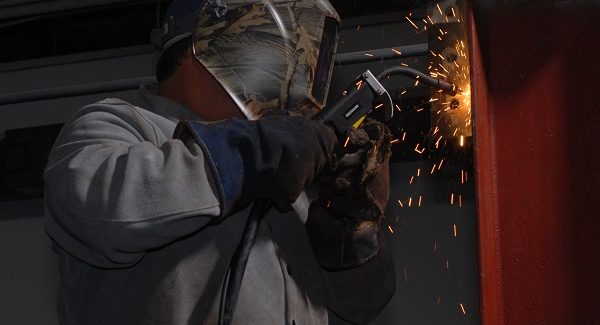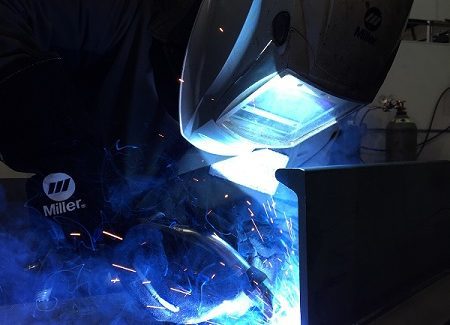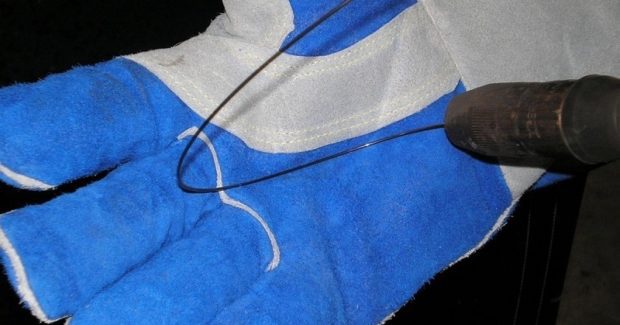Answers to Frequently Asked Questions About Filler Metals
Here are the answers to some of the most frequently asked questions about filler metals and welding best practices to help improve weld quality, productivity and overall welding success. These tips can help you make the right filler metal selection, address common challenges and get the most from your welding operation.
Posted: April 11, 2018
Achieving success in any welding application depends on numerous factors: from selecting the right consumables to using proper parameters and techniques. Proper filler metal selection and usage also plays a role in optimizing results. Consider these frequently asked questions about filler metals to help improve weld quality, productivity and overall success in your welding operation.
Q: What filler metal should be used for welding carbon steel to stainless steel?
A: Attaining success when welding dissimilar steels requires careful selection of filler metals and using proper welding procedures. Stainless steel alloy 309L is most commonly used to weld carbon steel to stainless, though 312 stainless steel or NiCrMo-3 nickel-based alloys are occasionally used in applications where cracking is a concern or issue. In some cases, more than one electrode may be used – referred to as “buttering the surface” – to lessen the transition between the materials. Also, limiting heat input reduces dilution of the weld deposit with the mild steel portion of the weld joint, which helps maintain the alloy content of the weld deposit and its desired corrosion resistance.
Q: What filler metal should be used to weld AR400 plate?
A: Abrasion-resistant steel plates, or AR plates, are designed for long service life in harsh conditions, which is the reason for their incredibly high hardness. The right filler metal and proper preheating can help reduce crack sensitivity with AR plate. The tensile strength of the base metal the AR plate is being welded onto will determine which filler metal is the most appropriate. Typically, filler metals like American Welding Society (AWS; Miami, FL) ER70S-6 solid wire, E71T-1 flux-cored wire or an E7018 stick electrode can be used for joining. If wear properties are necessary, a hardfacing product can be overlaid onto the material as well. Since each manufacturer of AR plate uses a different recipe to make the material, it’s recommended to contact the manufacturer for any specific filler metal, preheat and procedure requirements.
Q: Do flux-cored wires require external shielding gas?
A: Don’t assume that using flux-cored wires means no gas is required. There are two varieties of flux-cored wires: self-shielded flux-cored (FCAW-S) wires and gas-shielded flux-cored (FCAW-G) wires. Be sure to check the product data sheet to determine the wire type and the suitable shielding gas(es) if the wire requires one. A wire commonly used in self-shielded applications is AWS E71T-8, while a common gas-shielded wire is AWS E71T-1. Be aware that while self-shielded wires don’t require a shielding gas, they may require barriers when used in the field. Theoretically, self-shielded wires can be used in wind speeds up to 30 mph. However, porosity may appear at lower wind velocities, at which point the weld should be protected from the wind with a barrier.
Q: Should flux-cored wires be used with Direct-Current Electrode-Negative (DCEN) polarity?
A: While many popular self-shielded wires such as E71T-8JD-H8 and E71T-11 require DCEN, many others – both gas-shielded and self-shielded – require DC Electrode-Positive (DCEP) to operate properly. Always verify the proper polarity by consulting the product data sheet.
Q: Do metal-cored wires cost more than solid wires?
A: Metal-cored wires are typically more expensive than solid wires up front, but it’s important to consider the total costs in a welding operation. The increased deposition rates that metal-cored wires offer help increase travel speeds and decrease the number of passes required to make a weld. This, in turn, improves productivity and efficiency in the operation. In addition, some non-value-added pre- and post-weld activities, such as joint prep, grinding and applying anti-spatter, can be reduced or eliminated with metal-cored wires – saving more time and money. Since labor is the largest cost in the average welding operation, metal-cored wire can provide a fast return on investment in many applications. However, if the application requires welding on high-strength low-alloy (HSLA) steels, metal-cored wires typically end up being less expensive than low-alloy solid wires because metal-cored wires are easier to alloy to achieve high tensile strengths.
Q: What type of drive rolls are recommended for metal-cored and flux-cored wires?
A: Drive rolls are integral to smooth and consistent wire feeding. It’s recommended to use V-knurled drive rolls with minimal drive roll pressure for tubular wires, which are softer due to the flux inside and the tubular design. A V-knurled drive roll has teeth to dig into the wire and help push it through the feeder drive system and gun cable. With proper pressure set, the welding operator should be able to feed wire into a gloved palm without slippage. To set proper tension, begin by releasing all tension on the drive rolls. Then increase the tension while feeding the wire into a block of wood or gloved hand, continuing to increase the tension one half-turn past wire slippage. Make sure to properly set the tension each time the drive rolls are changed.
Q: What do the optional designators mean in an AWS classification?
A: Filler metal classifications for commonly used electrodes or wires may include optional designators. For example, H16, H8 and H4 are diffusible hydrogen designators that help determine how susceptible a product will be to moisture pickup and hydrogen-related weld discontinuities. As an example, H4 filler metals have a maximum of 4 milliliters of hydrogen per 100 grams of weldment. Keep in mind that any filler metal with these designations is considered low hydrogen, but the lower the value the better. The “J” designator in an AWS classification – such as E71T-1MJ – represents Charpy impact testing conducted at a lower temperature than normally required. Most mild steel flux-cored classifications (like E71T-1M) require a minimum 20 ft-lb at -20 deg F. If there is a “J” in the classification (such as E71T-1MJ), the requirement is now to achieve the minimum 20 ft-lb at -40 deg F. The “-1” in a stick electrode classification, such as 7018-1, means it meets requirements for improved toughness.
Q: Will it be difficult to machine a weld deposit made from a 120 ksi tensile-strength filler metal?
A: As a general rule, materials with a hardness of approximately 40 Rc and below are considered to have good machinability. The typical hardness for a 120 ksi product is approximately 25 Rc, so successfully machining these welds should not pose a problem.
This list of questions is not all-encompassing, but keeping these answers in mind can help you make the right filler metal selection, address common challenges and get the most from your welding operation.














